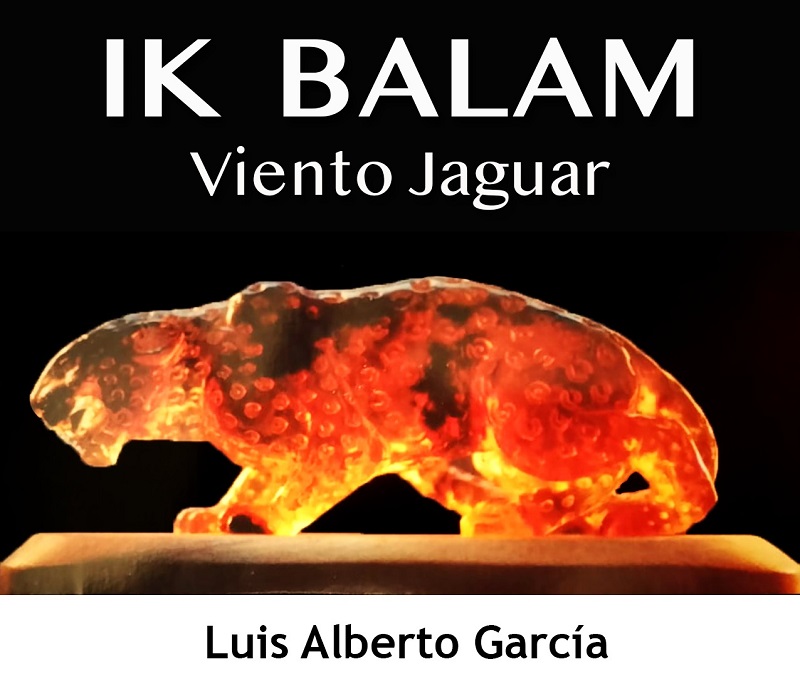Luis Alberto Garcia / Zamora Pico de Oro, Chiapas
*The pre-Columbian jaguar was considered part of cosmic energy.
* Millions of years have passed to inhabit a continent.
*Animal still important in past cultures.
*The concepts of anthropologists who magnify this species.
* Mapuches, Guarani, Incas and Aztecs venerated him.
The importance of the jaguar in the history of Latin America is such that, for example, in Colombia there are several proofs that this animal was very important for pre-Columbian cultures such as those that inhabited the region of San Agustín in the Department of Huila.
Many monoliths left by the culture that existed in the Colombian massif have figures in which the images of men are intertwined with those of animals, and in his book The River, Explorations and Discoveries in the Amazon Jungle, Canadian author Wade Davis considers that this should be interpreted as a spiritual transformation derived from the ritual use of coca or yagé.
For the anthropologist Gerardo Reichel-Dolmatoff, the figure of Panthera onca was interpreted by pre-Columbian cultures as an envoy to the world as proof of the will and integrity of human beings, whose beliefs placed them from the Bering Strait in Alaska, to Patagonia. in Argentina and Chile.
This cat was part of the cosmic energy, and the future of the existence of civilization depended on its meaning in relation to humanity. The shaman faced a specimen jaguar in his trance, and if he won the contest, he could direct the energy of the universe to infinity; but the cat took it away, it turned into a monster that devoured everything.
“It is the image of our darkest being”, refers to the Guarani culture, where there is the myth of the Yaguareté-Abá, a sorcerer who turns into a jaguar by rolling on the skin of the animal, a belief also shared with the peoples of the Grand Chaco.
The Mapuche people also attributed mystical powers to the jaguar, although today it is already extinct in Chile; the 2015 short “Nahuel”, about a Mapuche legend, saves such a story.
This species is often used as a symbol in contemporary culture. It is the national animal in Guyana, on whose coat of arms it appears; It also appears on the flag of the department of Amazonas (Colombia) on the shield of Montería Colombia, on the shield of the department of Córdoba Colombia and on the shield of the Mexican state of Guerrero appears a Jaguar warrior.
The legislatures of the Argentine provinces of Salta, Chaco, Misiones, Jujuy and Formosa have declared the jaguar a “treasure and provincial natural monument”, which implies both its incorporation as a representative element and its absolute protection.
In general, regulations of this nature are sanctioned when the preservation of the animal in question is in danger, and previously, on August 15, 2001, Congress declared Panthera onca a “national natural monument”.
It is widely used as a trademark, the most notable case being that of certain British luxury cars, whose name has been adopted by sports teams such as the Jaguares de Córdoba football club, the NFL’s Jacksonville Jaguars, the Southern Jaguars, of the American NCAA, the Mexican football team the Jaguares de Chiapas.
It also appears on the crest of the Argentine rugby team and is the name of that country’s professional rugby team that competes in Super Rugby. This cat also gave its name to the Grammy Award-winning rock band Jaguares.
His name appears in various sections related to technology such as the Atari Jaguar game console, the Jaguar experimental rocket or even the SEPECAT Jaguar or Grumman XF10F Jaguar fighter planes.
In 2016, the new 500 peso note was launched in Argentina, featuring the image of a jaguar on the obverse, a note that was the first, as well as the 200 peso note with the image of the right whale , in a series called Indigenous Animals aimed at highlighting local biodiversity in the Río de la Plata country.
The Series G Mexican Thousand Peso Banknote, issued in 2020 by the Bank of Mexico, shows a jaguar on the reverse, as part of the depiction of the rainforest ecosystem.
When it comes to the popular culture and language of Latin American nations, the saying “otorongo don’t eat otorongo” is used in some parts of the subcontinent to assert that corruption is hidden between interested parties.
comments

“Incurable alcohol evangelist. Unapologetic pop culture scholar. Subtly charming webaholic.”






